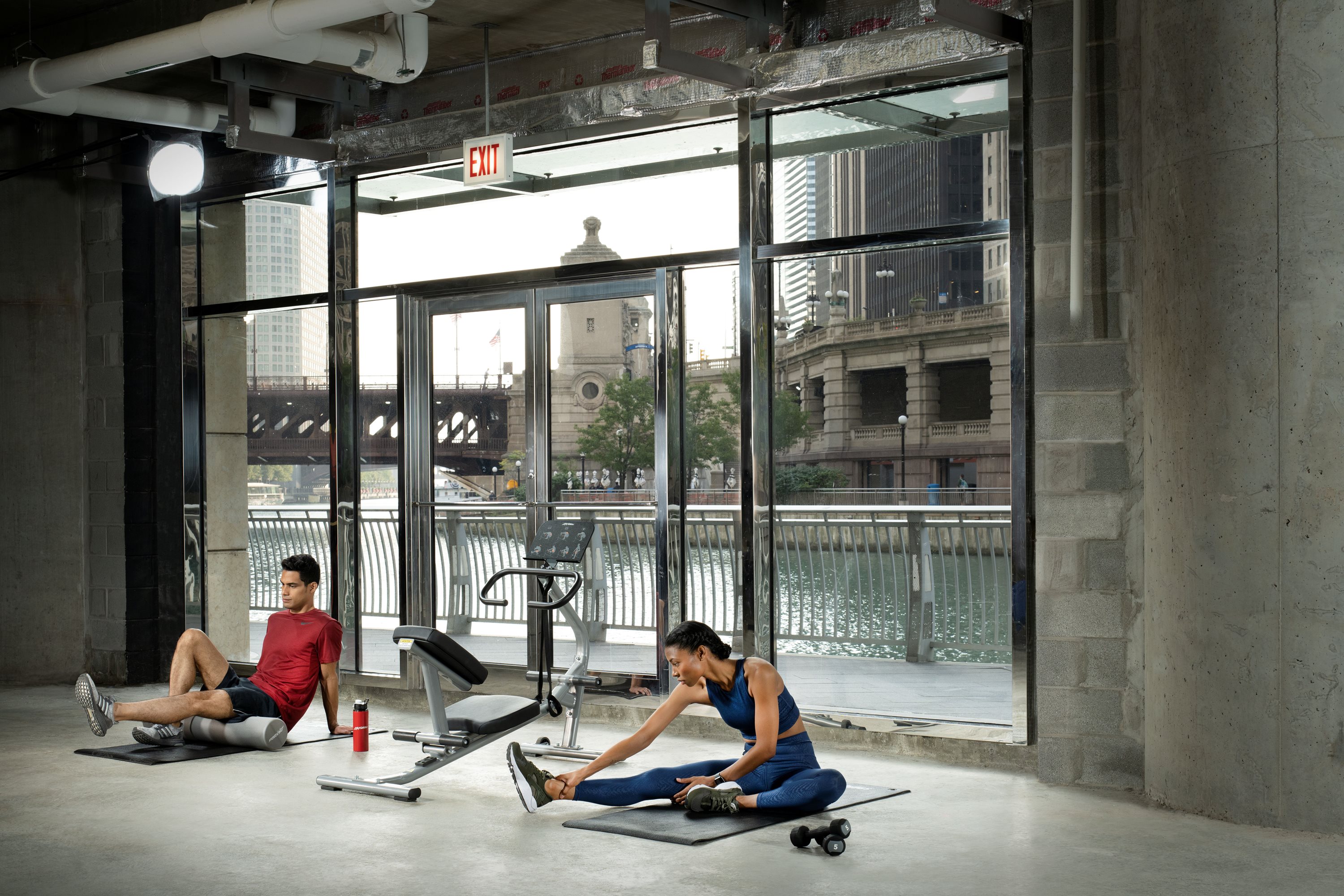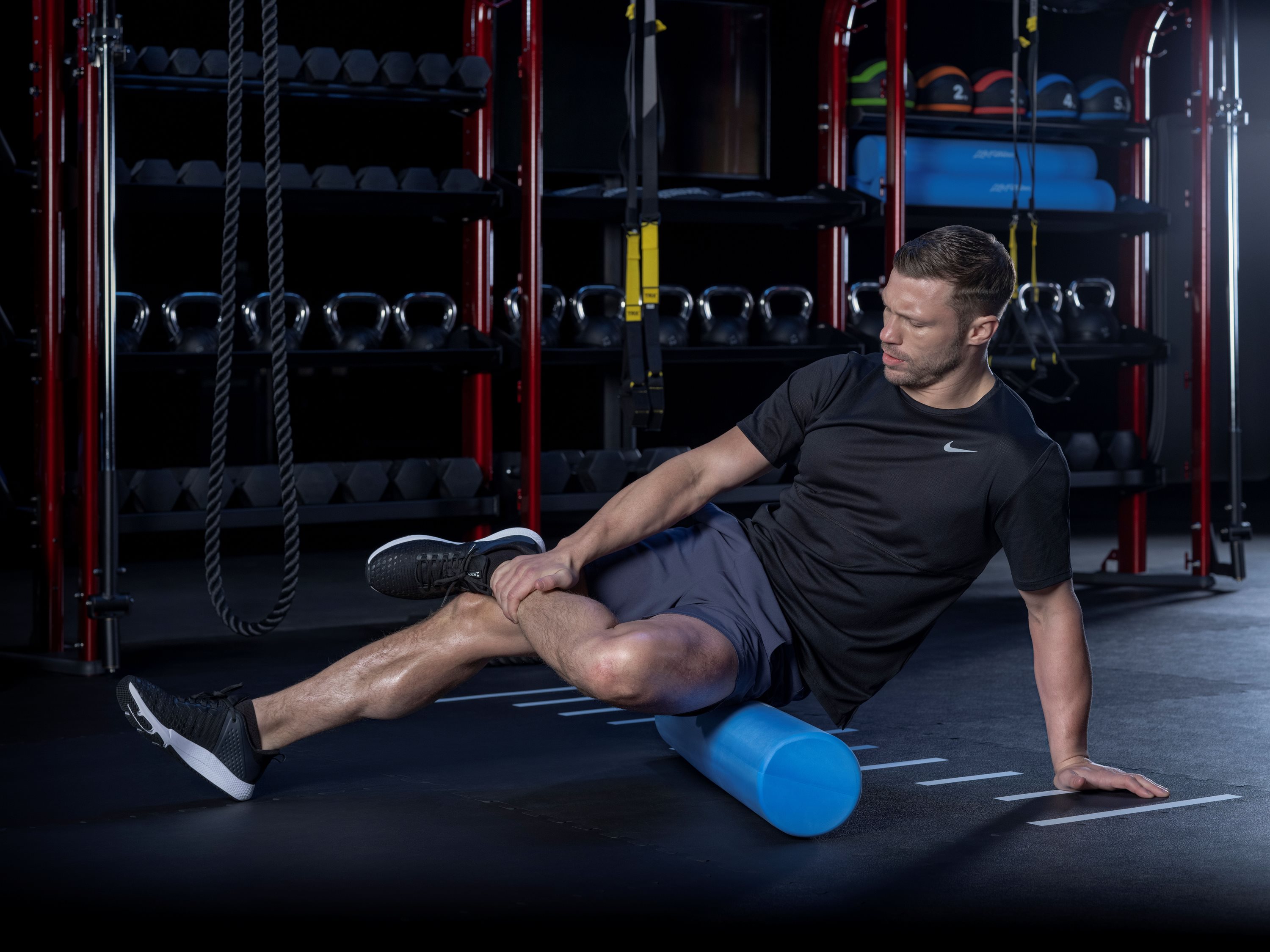Recover to Retain
With more than two decades spent designing, coaching in, and consulting on high-performing gym spaces, Ian Rushbury has seen firsthand how the most successful clubs don’t just focus on how hard members train, but also how well they recover. As Customer Experience & Training Manager for Global Key Accounts, Ian helps fitness operators around the world create environments that drive engagement, retention, and results.
In this article, Ian explores why recovery zones have become one of the smartest investments in modern gym design, and how they can turn downtime into a powerful driver of loyalty.
When it comes to gym design, most of the attention (and budget) tends to go towards performance zones, strength areas, and the “Instagrammable” rigs and racks. And while those zones undoubtedly drive training outcomes, there's a quieter, often underutilised area that’s becoming increasingly central to member retention and revenue growth: The Recovery Zone.
In an era where fitness is less about beast mode and more about balance, your members, especially those in the wellbeing mindset, are seeking more than just somewhere to lift, push, or sprint. They’re looking for a space to reset, recharge, and reconnect. And if you’re not offering that, there’s a real risk they’ll find it elsewhere.
In this article, you'll learn why recovery zones aren’t just a nice-to-have in the modern day fitness and health facility, but a must-have for up-to-date gym design and member engagement.

Recovery Zones: The Missing Piece in the Member Lifecycle
Today’s gym members aren’t training for extremes; they’re training for healthspan. This means a rising number of exercisers aren’t asking:
“How fast can I lift this?” They’re asking: “How long can I keep doing this?” and your club should reflect that shift.
Recovery zones serve multiple purposes:
- A calm-down space post-HIIT.
- A quiet corner to foam roll after a heavy leg day.
- A low-intensity visit on rest days.
- A non-intimidating entry point for anxious or returning exercisers.
More importantly, they give members a reason to keep coming in, even when they’re not in full workout mode.
What Today’s Wellbeing-Focused Member Wants
You’ve likely noticed this shift already. Members are increasingly drawn to holistic health. Mindfulness, longevity, mobility, mental wellbeing, recovery and sleep are all part of the plan. They want to feel better, not just look better. Recovery zones tap into that.
When designed and positioned well, recovery zones serve these core needs:
- Calm & Comfort - Soft lighting, calming colours, and gentle acoustics. Think spa-meets-gym, even on a small scale. It doesn’t have to be luxury; it just has to feel like a contrast to the intensity of the training floor.
- Guidance without Pressure - Offer visual cues: foam rolling guides, mobility flow signage, digital screens with breathing or stretching prompts. Keep it accessible and non-clinical.
- Space to Slow Down - Unlike cardio and strength zones, members don’t want to feel rushed in a recovery space. Keep it spacious, uncluttered, and deliberately slower in vibe.

Strategic Placement: Get the Zone Right, Not Just the Kit
Here’s what I have seen work best in the best performing clubs around the globe:
- Near the entrance/exit – so it’s the first and last thing members see. It sets a tone and reinforces your brand’s care for longevity.
- Close to PT areas – where trainers can integrate prehab/rehab and cooldown work into client sessions.
- Away from noise-intensive zones – let the atmosphere do the talking.
What Should Be in a Recovery Zone?
You don’t need cryo chambers and massage beds (though they’re great if your brand supports them). A simple, intentional space with well-thought-out tools will go a long way.
Here’s what works:
- Foam rollers, massage balls, and mats
- Percussion guns or wall-mounted myofascial tools
- Stretching cages or assisted stretch machines
- Stability balls, yoga blocks, straps, resistance bands
- Instructional posters or digital prompts to guide movement
- Ambient lighting and natural tones
- Seating or soft benches for breathwork or downtime
Why Recovery Zones = More Visits (And That Means Retention)
Why should you invest in this space? Because it gets members back in the building, even on their rest days. And as you will know, more visits per week = more value = higher retention in the membership.
A member who drops in for 10 minutes of recovery is still a visit counted. Still a check-in logged. Still a brand impression made and they have another opportunity to be immersed in your community. Still seeing your staff. Still feeling like they belong and achieving their intended healthy behaviours. That is retention magic.
Recovery as a Revenue Opportunity
Recovery isn’t just about retention; it is also a great upsell opportunity. Your trainers will be able to upskill themselves to deliver these experiences too, and vendors also may be able to offer specialist workshops to your members, delivering even more engagement in your product choices and services.
You could wrap recovery offerings into:
- Premium memberships (add-on wellbeing access)
- PT packages (with guided mobility or stretch sessions)
- Wellness workshops (mobility & breathwork classes)
- In-app education (promoting recovery through content and digital coaching)

Marketing Counts
Recovery zones are often underutilised because they’re under-marketed. Be sure to make them visible in your member journey and within your social media strategies too. I find these 4 design tips work best for most clubs:
- Show the function of them in club tours - physically walk the member into the space rather than a simple ‘walk-past’
- Use lifestyle-led photos of members using the area - not just equipment shots.
- Incorporate the features into onboarding emails - “Here’s where you recover.”
- Get PTs and coaches to lead quick "5-minute cooldowns" in these areas - especially during peak hours.
Let your members see that your gym is a place to slow down, not just speed up.
In Summary: Recovery = Results = Retention
A well-designed recovery zone says to your members that “We care about your whole journey, not just the working out part.” It sends a message that your club isn’t just a place to train hard, but a space to feel well and belong. And in 2025 and beyond, that message matters more than ever.
My final advice? Invest in recovery not just as a space, but as a strategy.
Our experts at Life Fitness / Hammer Strength can help you determine what recover zone works best in your space. Contact a sales representative today.



